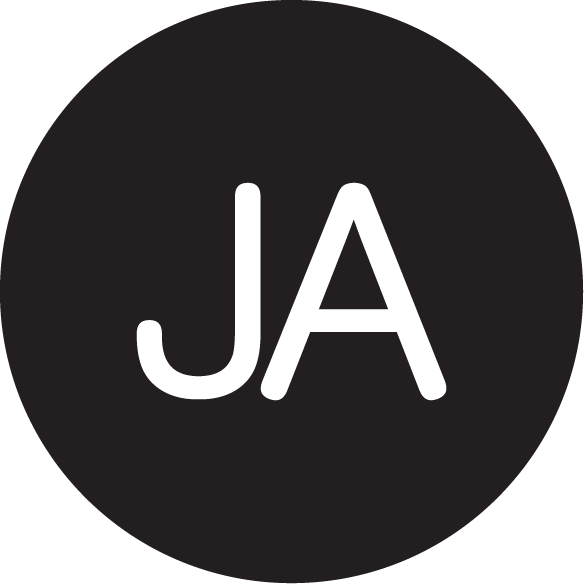What's In a Pronoun?
/Hi, I’m Liz, and my preferred pronouns are she/her.
Photo by Sharon McCutcheon on Unsplash
It’s Pride Month, and in support of our LGBTQ+ community, let’s talk about our pronouns.
I have had moments when I used the wrong pronoun for acquaintances with gender-neutral or uncommon names, or names originating in a language I’m unfamiliar with. In virtual meetings, with incomplete names on an attendee list and no faces to look at, it can be uncomfortable wondering who is on the other side of the Zoom room. Is Jordan male or female? Have I ever met “jsmith” in person before? Is that name a man’s or a woman’s?
But when I ask myself these questions, I am missing the point. The real question I should be asking in these circumstances is, “What are your preferred pronouns?” Pronouns are not tied to a name, assigned sex, physical appearance, or preference in partners. Pronouns are intrinsic to our identities.
Allyship
As a cis-gendered white woman in America who was given a common, Anglo-Saxon name, I have the privilege of never being asked to pronounce my name or clarify my pronouns to anyone. People familiar with English see my name and gender me as female. I also dress in a way that our culture considers feminine. When people see my name in an email or my face on a Zoom call and assume my pronouns are she/her, they’re right. But that’s not the case for everyone.
By sharing my personal pronouns in online forums and in group settings, I am helping to normalize this practice for individuals who may identify as non-binary, or who may prefer pronouns that others wouldn’t assume based on their name or physical appearance. While not every person who identifies as transgendered or non-binary wants to share their preferred pronouns, those who do can feel more comfortable sharing theirs in environments that support and normalize the practice.
“For me, normalizing pronoun use is key to making everyday life for trans people safe. I hear pronouns regularly being shared in queer and trans spaces, but pronouns are important for everyone to use. They are especially important for cisgender allies when trans people aren’t around.”
But why is it so important for some people to have the right pronouns used when referring to them? Studies have shown that for transgender individuals, affirming the use of their preferred pronouns reduces depression and raises self-esteem. For personal stories and testimonials about the importance of using preferred pronouns, look no further than GLAAD, who celebrated International Pronouns day in 2019 by interviewing GLAAD campus ambassadors about this very topic.
“Pronouns to me are like a hug, or a squeeze on my shoulder, something that says, ‘I see you for who you are in your entirety, and I love you for it.’ When I’m mis-gendered, it’s a stab at my heart. That sounds dramatic, but there’s no easy way to describe the whirlwind of disappointment, anger, and sadness that courses through me. But when people use my correct pronouns it means that on some level, they respect my experience and they recognize this essential aspect of who I am.”
They/Them
The most common pronoun preferences being used in the United States today are he/him, she/her, and they/them, though there are less common alternative non-binary pronouns including ze/zir, per/pers, ey/em, and xe/xem. One comment I hear about individuals using the pronouns they/them is that it is an improper use of a plural word to describe a single person.
In 2015 the American Dialect Society selected “they” as the Word of the Year, and in 2020 the organization declared it the Word of the Decade for the 2010s! Merriam-Webster named “they” the Word of the Year in 2019, solidifying the singular “they/them/theirs” as accepted pronouns for individuals. Believe it or not, there is an entire Wikipedia page dedicated to explaining how the singular use of “they” is appropriate and identifying it as common in writing back to the Middle Ages. While it isn’t always comfortable for native English speakers to use they/them when referring to one person, with awareness and practice, we can make that shift. (And yes, I’m still working on it).
All of Us
Though the sharing of preferred pronouns in professional, educational, and community settings is becoming more prevalent, we are bound to make mistakes and misgender individuals by using the wrong pronouns from time to time. MyPronouns.org is a fantastic resource with straightforward explanations about pronouns, how to use them appropriately while writing and speaking, and how to correct ourselves – and others – when we slip up.
Beyond asking – and using – individuals’ preferred pronouns, what can we do to use more gender inclusive language when speaking to groups or writing for wider audiences? As a marketing professional, using less gendered terminology in my copywriting and editing is one way that I can make subtle shifts in messaging and become more inclusive. In public speaking, simply using “friends and colleagues” instead of “ladies and gentlemen” and “children” instead of “boys and girls” are examples of removing unnecessarily gender-specific language without replacing the meaning. More examples of more inclusive language can be found on the MyPronouns website.
You may have noticed lately that social media and networking sites like LinkedIn are adding preferred pronoun options to our profiles. Social justice and equity are imbued in JA’s practice, imbedded in our company culture 30 years ago when Ray and Mary Johnston founded the firm. Today, as a JUST organization and a women-owned company, these values are more apparent than ever, but we can always do better. As 2021’s Pride Month is coming to a close, JA is implementing the optional use of pronouns to our email signatures – a small step, but we think it is an important one.

